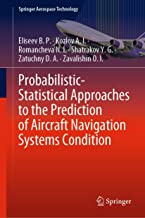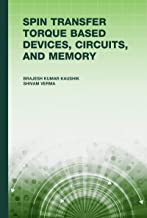Probabilistic-Statistical Approaches to the Prediction of Aircraft Navigation Systems Condition
Original price was: ₹10,174.08.₹8,139.26Current price is: ₹8,139.26.
ISBN: 9789811399220
Author/Editor: Eliseev
Publisher: Springer
Year: 2020
1 in stock (can be backordered)
Description
This book highlights the development of new methods for assessing and forecasting the state of various complex ageing systems in service; analyzing the influence of destabilizing factors on the accuracy of aircraft flight navigation support; and making recommendations on the ideal aircraft route, taking into consideration the available information on the reliability of the navigation and communication equipment.
Additional information
| Weight | 0.45 kg |
|---|
Product Properties
| Year of Publication | 2020 |
|---|---|
| Table of Contents | CHAPTER 1. PROBABILITY-STATISTICAL MODELS OF PROCESSES OF AGEING AND survivability OF COMPLEX SYSTEMS 1.1. Quasideterministic models of processes of complex systems ageing. 1.2. Statistical models of processes of complex systems ageing. 1.3. Analysis of state of complex systems ageing. 1.4. Forecasting processes of ageing of individual elements of complex systems. 1.5. Methods of enhancing aircraft survivability taking into account various external threats. CHAPTER 2. ANALYSIS OF STATISTICAL MODELS OF AGEING NAVIGATION SYSTEMS 2.1. Free ageing navigation systems. 2.1.1. Exponential transition function. 2.1.2. Gaussian transition function. 2.1.3. Fisher-Snedeker transition function. 2.1.4. Linear transition function. 2.1.5. Time dependence. 2.2. Recoverable ageing navigation systems. 2.2.1. Exponential model. 2.2.2. Linear model. 2.3. Assessing state of ageing navigation systems. CHAPTER 3. SPECIFIC FEATURES OF CONTROL OF AIRCRAFT RADIO NAVIGATION DEVICES UNDER CONDITIONS OF EXPOSURE TO DESTABILIZING FACTORS 3.1. Specific features of aircraft travel control taking into account influence of destabilizing factors on radio navigation equipment. 3.2. Specific features of aircraft travel control under conditions of simultaneous exposure of radio navigation equipment to two destabilizing factors. 3.2.1. Specific features of control of two-parameter systems with stepwise reliability function. 3.2.2. Time characteristics of processes of changing parameters with respect to control objectives. 3.3. Specific features of aircraft travel control under conditions of simultaneous exposure of radio navigation equipment to a great number of destabilizing factors CHAPTER 4. BASIC RADIOTECHNICAL FACILITIES OF PROVIDING RELIABILITY OF AIRCRAFT FLIGHT 4.1. Analysis of electromagnetic situation in the airfield area. 4.2. Sources of radio noise and its influence on assessing accuracy of aircraft positioning. 4.2.1. Municipal TV-broadcasting. 4.2.2. Short-wave communication stations. 4.2.3. Homing automatic radio stations. 4.2.4. Radio-technical facilities of airport zone. 4.2.5. Influence of technical condition of radio-technical facilities of airport zone. 4.2.6. Ultra-high frequency airborne and ground radio stations. 4.2.7. Influence of main and indirect emission of short-wave radio communication stations on approach radar system glide-slope channel. 4.3. Assessing serviceability of ground GBAS station. CHAPTER 5. TRANSMISSION OF DIGITAL NAVIGATION DATA AND ASSESSMENT OF RESULTS OF TAKEN DECISIONS 5.1. Methods of navigation data transmission and assessment of results of taken decisions. 5.2. Approach to establishing electronic data storage to provide proper analysis of information being transmitted from aircraft. 5.3. Methods of adopting decisions for assessing probability of failure-free operation of navigation data transmission line. 5.4. Assessing probability of failure-free operation of navigation data transmission line taking into account a priori information on probability of failure-free operation of component elements. 5.5. Comparison of thumb-rule assessment of failure-free navigation data transmission via data transmission line. 5.6. Inverse problem of assessing quality of elements of navigation data transmission line. 5.7. Substantiation of selecting type of navigation data transmission line. CHAPTER 6. SELECTION OF ROUTE OF AIRCRAFT TRAVEL IN CASE OF TRANSITION TO ZONAL NAVIGATION TAKING INTO ACCOUNT RELIABILITY CHARACTERISTICS OF NAVIGATION AND COMMUNICATION EQUIPMENT 6.1. Specific features of incorporation of zonal navigation. 6.2. Updating aircraft travel route taking into account ICAO recommendations on air traffic organization. 6.3. Method of monitoring of altitude separation using ZN-V devices. LITERATURE Adopted abbreviations |
| Author | Eliseev |
| ISBN/ISSN | 9789811399220 |
| Binding | hardback |
| Edition | 1 |
| Publisher | Springer |
You must be logged in to post a review.






Reviews
There are no reviews yet.